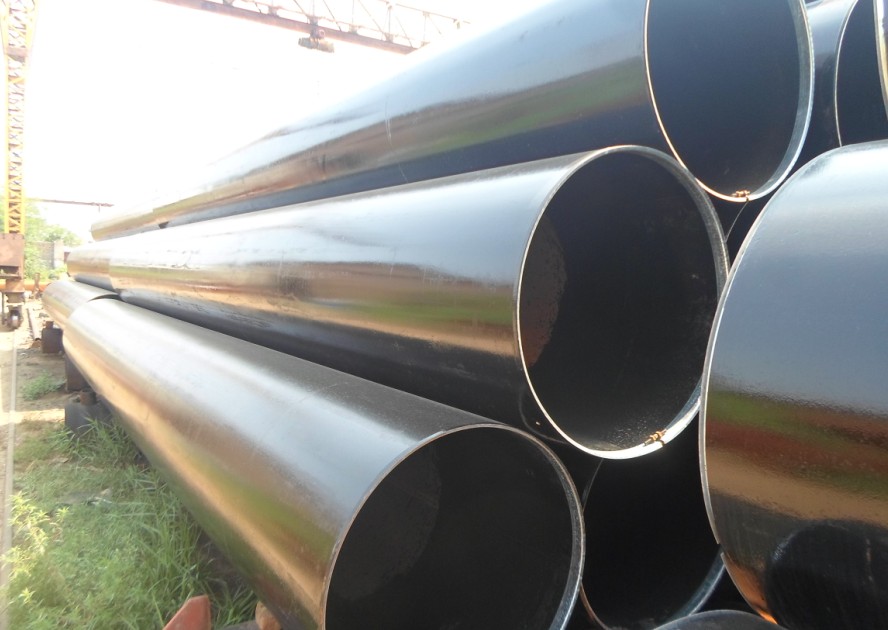As a traditional industrial material, carbon steel pipe has long occupied an important position in the fields of oil, natural gas, construction and machinery manufacturing due to its advantages of high strength, high temperature resistance, corrosion resistance and economy. However, with the advancement of the scientific and technological revolution, the application boundaries of carbon steel pipes are being redefined. In emerging technology fields such as new energy, aerospace, 3D printing, and smart buildings, carbon steel pipes have shown unprecedented application potential through material modification, structural innovation and process upgrading. This article will analyze the breakthrough uses of carbon steel pipes in new technology fields from multiple dimensions.

1. New energy field: innovative adaptation of hydrogen energy storage and transportation and carbon steel pipes
Hydrogen energy is regarded as the ultimate clean energy in the 21st century, but its storage and transportation face technical bottlenecks. Traditional steel pipes are prone to "hydrogen embrittlement" in high-pressure hydrogen environments (hydrogen atoms penetrate into the metal lattice to cause embrittlement), while the new generation of carbon steel pipes have significantly improved their hydrogen embrittlement resistance through surface nano-coating technology and alloy composition optimization (such as adding chromium, molybdenum and other elements). For example, the "hydrogen-compatible carbon steel pipe" developed by Kawasaki Heavy Industries of Japan has been successfully applied to liquid hydrogen transport ships. Its pressure resistance reaches more than 45MPa, and its cost is 30% lower than that of stainless steel.
In addition, carbon steel pipes also play a key role in carbon dioxide capture and storage (CCS) systems. Through inner wall galvanizing or epoxy resin composite treatment, carbon steel pipes can withstand corrosion from high concentrations of CO₂ and acidic media, making them the preferred material for underground storage pipelines.
2. Aerospace: A new balance between lightweight and high strength
The requirements for lightweight and strength of materials in the aerospace field are almost harsh. Although traditional titanium alloys have excellent performance, they are expensive. In recent years, the strength-to-weight ratio of carbon steel pipes has been significantly improved through precision cold rolling and heat treatment processes. For example, SpaceX in the United States uses thin-walled high-strength carbon steel pipes (ASTM A519 standard) in the auxiliary fuel pipelines of its Starship, with a tensile strength of more than 800MPa and a weight reduction of 15% compared to traditional solutions.
In addition, the application of carbon steel pipes in satellite truss structures has also attracted much attention. Through topological optimization design, carbon steel pipes can be constructed into honeycomb or mesh support frames, which can withstand the violent vibrations during the launch phase and adapt to the extreme temperature difference environment in space.
3. Additive manufacturing (3D printing): the disruptive potential of carbon steel pipe powder
The maturity of metal 3D printing technology has opened up new application scenarios for carbon steel pipes. Combining carbon steel powder with laser selective melting (SLM) technology can achieve one-piece molding of complex structural pipes. For example, Siemens Energy in Germany uses 3D printed carbon steel pipes to manufacture gas turbine blades with internal cooling channels, and its thermal efficiency is 8% higher than that of traditional castings.
A more cutting-edge application is "functionally gradient material (FGM) pipes". By dynamically adjusting the ratio of carbon steel to other metals (such as nickel-based alloys) during the printing process, pipes with gradually changing performance from the inside to the outside can be prepared, with the inner layer being corrosion-resistant and the outer layer being impact-resistant, suitable for extreme environments such as deep-sea drilling platforms.
4. Smart buildings and modular infrastructure: Digital upgrade of carbon steel pipes
In the field of smart buildings, carbon steel pipes are deeply integrated with the Internet of Things (IoT) technology. For example, carbon steel pipes embedded with fiber optic sensors can be used to monitor the structural health of bridges and high-rise buildings in real time, and warn of potential risks through strain and temperature data. The "smart water pipe network" in Seoul, South Korea uses such steel pipes, reducing water leakage losses by 20% each year.
In the wave of modular buildings, the standardized connection advantages of carbon steel pipes are further highlighted. The "bolt-assembled carbon steel frame" launched by Chinese companies can complete the main construction of a 30-story building within 48 hours, and its node strength has reached the 9th level standard after seismic testing.
5. Environmental protection and circular economy: Green rebirth of carbon steel pipes
The recyclability of carbon steel pipes (recycling rate of more than 98%) makes it a benchmark material for the circular economy. In the European "Green Steel" plan, the electric arc furnace (EAF) smelting technology can directly convert waste carbon steel pipes into new steel pipe raw materials, reducing carbon emissions by 70% compared with traditional blast furnace processes. In addition, carbon steel pipes have demonstrated their environmentally friendly characteristics in corrosion-resistant applications in desalination plants and high-temperature casings for geothermal energy wells.
Future Outlook: Technical Breakthrough Direction of Carbon Steel Pipes
Although carbon steel pipes have performed well in emerging fields, they still need to break through the following bottlenecks:
Extreme environmental adaptability: For example, the inner wall material of a nuclear fusion reactor needs to withstand neutron radiation and high-temperature plasma;
Intelligent manufacturing: Combine AI algorithms to optimize the pipe forming process, reduce energy consumption and waste;
Low-cost surface modification technology: Develop more efficient anti-corrosion and wear-resistant coatings to expand application scenarios.

